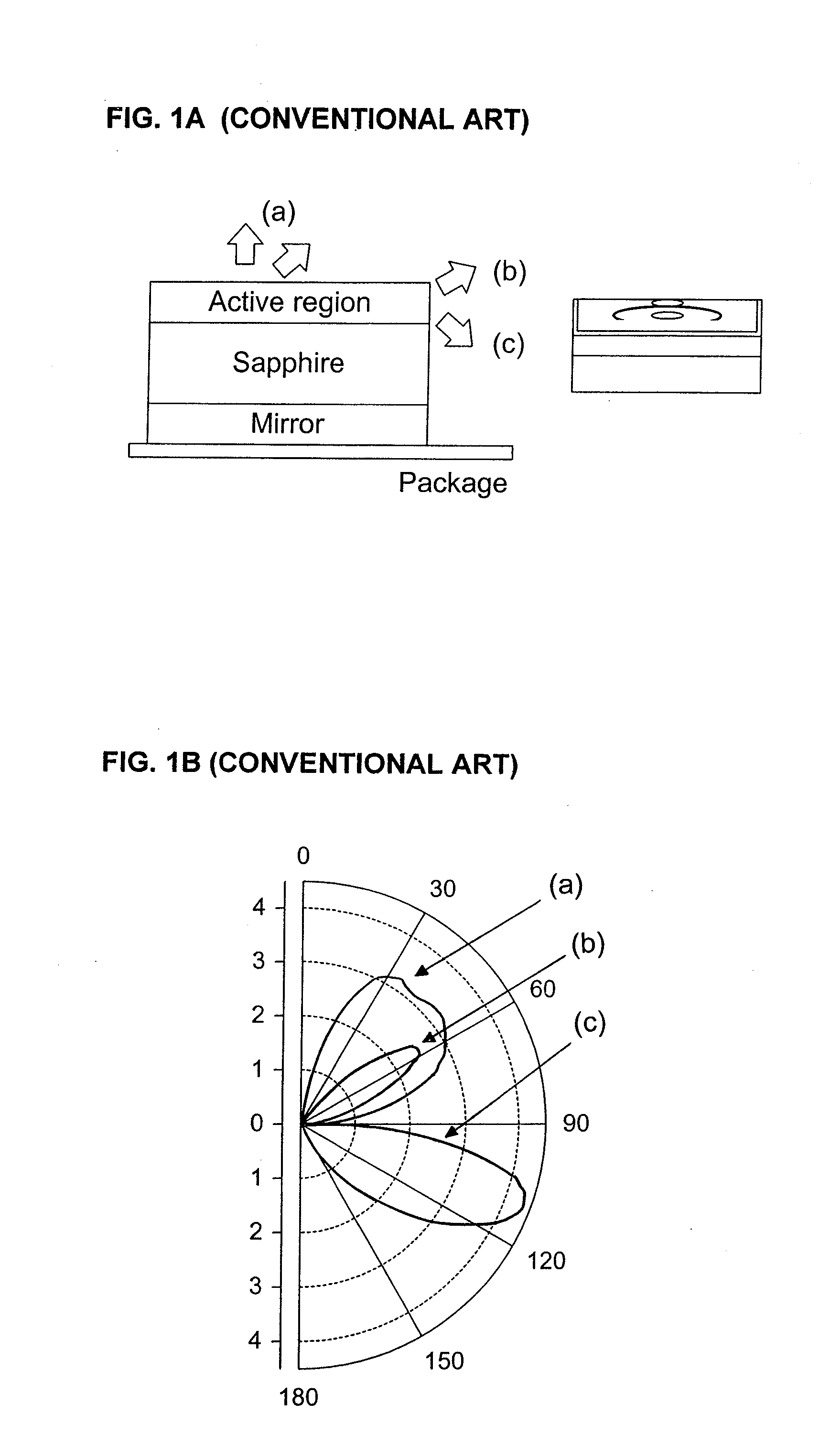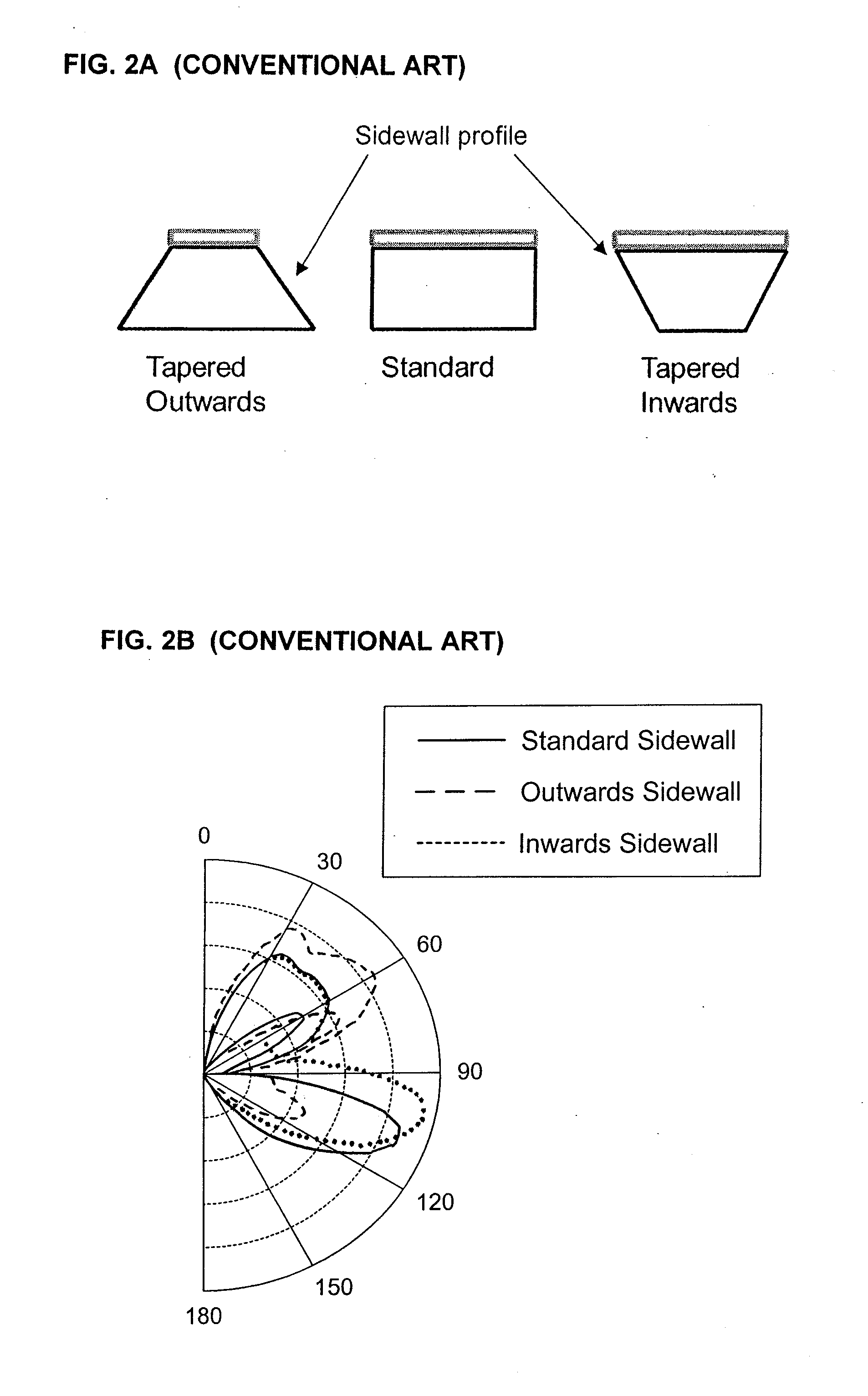Light emitting diode with improved directionality
a light-emitting diode and directionality technology, applied in the direction of semiconductor/solid-state device manufacturing, semiconductor devices, electrical apparatus, etc., can solve the problems of dictating chip performance, light directionality, and major problem of lee for nitride, and achieve the effect of reducing c emission
- Summary
- Abstract
- Description
- Claims
- Application Information
AI Technical Summary
Benefits of technology
Problems solved by technology
Method used
Image
Examples
embodiment 1
[0065]FIG. 7 illustrates an exemplary device structure in accordance with first embodiment (Embodiment 1) of the invention. The tapered outwards portion of the structure 6 is made from the different material (a second material) to that of the host substrate (a first material). The tip of the tapered outwards region can be higher, lower or similar to the LED chip. The reflector base of the LED package 7 is an imaginary layer where the LED is typically mounted. The refractive index of the tapered outwards portion 6 is ideally similar to the host substrate (refractive index of sapphire is ˜1.77@450 nm). Examples of transparent material in this refractive index range that can be used include SiOxNy, Optindex D54, Norland adhesives or other materials. However, this material can also be of lower refractive index than the host material. It is important to note that the inventive approach has a significantly different concept to the prior art structure described in FIG. 5A. The method of en...
embodiment 2
[0067]FIG. 9 is an illustration of a second embodiment (Embodiment 2) in accordance with the invention. For this structure, the tapered outwards structure is made from a series of material with different refractive indices. As example, layer 10 will have a similar or lower refractive index than the host substrate 1, and layer 11a lower refractive index than layer 10, and layer 12 being lower than layer 11. Any number of layers for the tapered outwards portion can be used in this structure, with any combination of refractive indices. It is not necessary for the refractive index to be graded or to follow a particular trend. In theory, by grading the refractive index from high to low moving outwards of the structure can improve LEE.
embodiment 3
[0068]FIG. 10 is an illustration of a third embodiment (Embodiment 3) in accordance with the invention. For this structure, the tapered outwards structure is formed externally on the LED package or reflector side, the LED package including a base formed from a first material and the tapered structure formed from a second material. This approach has the added advantage of not having to shape the LED sidewalls, therefore simplifying the manufacturing process. Instead of forming the tapered outwards portion on the LED chip, the tapered outwards structure 13 is pre-formed on the LED module package base 14, for example as pocket columns (e.g., preformed sidewalls into which the LED package may be inserted). In the case of a high power LED module, a series of pockets are then formed on the package base. It is not essential for the height of the pocket structure to be similar to that of the LED chip. The tapered sidewall 13 is ideally transparent and can be made of the same or different ma...
PUM
 Login to View More
Login to View More Abstract
Description
Claims
Application Information
 Login to View More
Login to View More - R&D
- Intellectual Property
- Life Sciences
- Materials
- Tech Scout
- Unparalleled Data Quality
- Higher Quality Content
- 60% Fewer Hallucinations
Browse by: Latest US Patents, China's latest patents, Technical Efficacy Thesaurus, Application Domain, Technology Topic, Popular Technical Reports.
© 2025 PatSnap. All rights reserved.Legal|Privacy policy|Modern Slavery Act Transparency Statement|Sitemap|About US| Contact US: help@patsnap.com



